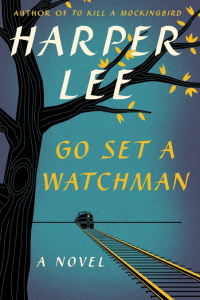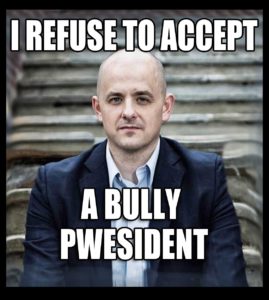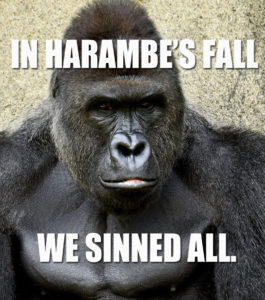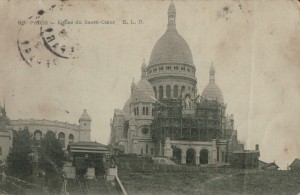
(Note: This is a draft, with some mispunctuations and typos, as well as too many clotted clauses. The “final” version is somewhere else.)
As nearly everyone knows by now, Atticus Finch, that steadfast attorney from Maycomb, Alabama, led the local Citizens’ Council in the 1950s. When agitators from the NAACP and Communist Party came south to stir up trouble after the Supreme Court’s 1954 Brown decision, he fought the good fight for segregation. Atticus had even joined the KKK once upon a time, but that was in, like, 1919. You know, back when the Klan was a respectable organization, like the Masons. Something professionals and gentlemen could belong to.
Or so goes the Atticus we are given in the newly published, long-suppressed novel Go Set a Watchman by Harper Lee, author of that phenomenal early-60s bestseller To Kill a Mockingbird. It’s the publishing succès de scandale of the season. Because while Watchman is not a very good book (let’s get that out of the way right now), it depicts Atticus as a crusading segregationist. The Atticus in To Kill a Mockingbird is quite another thing entirely.
Remember the Atticus Finch from To Kill a Mockingbird, the novel or (better yet) the 1962 Academy Award-winning film? That Atticus is a god-like hero to the local Negro community, a 1960s-styles civil-rights liberal living in 1935. Well, Go Set a Watchman‘s Atticus, written slightly earlier and based more immediately on Harper Lee’s elderly attorney father, A.C. Lee, is a hero of a different sort. He keeps anti-mongrelization pamphlets about the house, and argues that the Negro has not sufficiently “evolved” to be given social equality.
It is not likely that a professional Hollywood liberal like Gregory Peck (Atticus in the Oscar-sweeping movie version of TKAM) would ever care to play or meet this Atticus. The great climactic scene in the story is a conversational showdown with his daughter (and stand-in for the author), in which he lectures her, patiently and at length, about the Negro problem.
“Jean Louise,” he said. “Have you ever considered that you can’t have a set of backward people living among people advanced in one kind of civilization and have a social Arcadia?” . . . “Let’s look at it this way. . . You realize that our Negro population is backward, don’t you? You will concede that? You realize the full implications of the word ‘backward,’ don’t you? . . . You realize that the vast majority of them here in the South are unable to share fully in the responsibilities of citizenship, and why?”
A couple of pages later, Atticus prophesies what doom and corruption would ensue if we had a Black-Run Government:
“Now think about this. What would happen if all the Negroes in the South were suddenly given full civil rights? I’ll tell you. There’d be another Reconstruction. Would you want your state governments run by people who won’t know how to run ’em? Do you want this town run by—now wait a minute—Willoughby’s a crook, we know that, but do you know of any Negro who knows as much as Willoughby? Zeebo’d probably be Mayor of Maycomb. Would you want someone of Zeebo’s capability to handle the town’s money? We’re outnumbered, you know. . .
“[T]he Negroes down here are still in their childhood as a people. . . The NAACP doesn’t care whether a Negro . . . tries to learn a trade and stand on his own two feet—oh no, all the NAACP cares about is that man’s vote.”
Finally his daughter, Jean Louise Finch (the “Scout” from TKAM) gets in a spluttering rebuttal, and it’s a doozy.
“I know it’s [civil-rights progress] got to be slow, Atticus, I know that full well. But I know it’s got to be. I wonder what would happen if the South had a ‘Be Kind to the Niggers Week’? If just for one week the South would show them some simple, impartial courtesy. I wonder what would happen. . .”
Then her temper suddenly flares, she calls her father names, and drives off in his car, swearing she’ll never speak to a family member again. [1]
By now you will have some notion of why this “lost” novel was kept buried deep in the Harper Lee archives for over a half-century. It is incredibly un-PC and a little too spot-on in its predictions. Moreover it’s a terribly talky book, one in which little occurs except petty disputations about politics and family relations. The characters spend most of their time talking about obscuranta such as church hymns and Lord Melbourne. Yes, Lord Melbourne—you know, the feather-blowing early-Victorian Prime Minister. But why oh why? He is repeatedly invoked here, and also made a guest appearance in TKAM, for some reason known but to God and Harper Lee.
* * *
Watchman has a number of odd stylistic curlicues. The lead character is given to a lot of interior monologue, some of it stream-of-consciousness-y and difficult to disentangle from the outside conversations. She likes to quote Gilbert & Sullivan lyrics to herself. I first spotted something from Trial by Jury, then The Mikado . . . finally, when I came across a Mad Margaret song from Ruddigore, I realized that the narrative routine of Go Set a Watchman is in fact very much like bad W. S. Gilbert. An eccentric character comes on stage, tells why he is eccentric, sings a song—and departs! That’s pretty much how it goes with Watchman. We get a gallery of static characters, many of them mildly eccentric, but none of them eccentric enough to be interesting. Harper Lee no doubt saw this problem, and that’s why she filled TKAM with a whole menagerie of Southern Gothic crazies.
Additionally, and unlike TKAM, Watchman lacks excitement. There are no murders, no rapes. There is no sex or even romance to speak of. Jean Louise Finch has a sad-sack boyfriend, Hank, a young attorney of white-trash origins who works for her father; but Hank is not marriage material for a Finch; so like most of the subplots, this one’s a dud.
There is however one shining episode of a gynecological nature. This is a long flashback to childhood and the schoolyard. The setting makes it a kind of foreshadowing of TKAM even though it occurs a couple of years later than its time-scheme. Jean Louise, still the tomboy known as Scout, is now eleven or twelve years old. One day she gets her period, and high comedy ensues.
Now, Scout’s mother is long dead, so of course Scout doesn’t know about menarche and such like . . . because although Scout’s been reading since she was a baby, supposedly (we learn this in TKAM), somehow she hasn’t learned anything of a practical nature. Finally Scout gets clued in by the Finches’ black housekeeper, Calpurnia. She goes back to school next day, very unhappy, since she’s become a woman and all that. She’s all harnessed up under her school dress with a Kotex pad the size of a brick and a sanitary napkin belt. (The modern reader is probably unfamiliar with the aforementioned contraption, and I expect this passage will puzzle many readers. In brief, sanitary-napkin belts were standard-issue female gear till about mid-century, though they continued to be listed at least through the 1960s on what-to-pack checklists for boarding schools, summer camps, and insane asylums.)
Anyhow, here is Scout, and she’s walking funny. The white-trash girls from up-county know the score and laugh at her. They make jokes about the Curse, and fill her full of schoolyard misinformation.
A boy French-kisses Scout; she’s learned from her white-trash friends that once you start ministratin‘, a tongue-kiss will make you pregnant! Scout thinks she’s in a fambly way and there’s only one way out of her shame. She must go to the edge of town and jump off the water tower. Of course the whole town gathers ’round . . . and young Scout finally learns the Facts of Life.
Here at last is the author in full flower. This episode shows the kind of book she should have written. A black comedy full of menstruation and French-kissing gags would make a fine addition to any publisher’s Young Adult backlist.
* * *
Some peculiar and wrongheaded notions have attended the publication of this novel, errors we are going to hear repeated for years to come. One is that it is somehow a rough draft or “prequel” for TKAM. [2] It is neither, although the setting and characters are similar. Nor, of course, is it a sequel, though it is set twenty years later.
Nor was its existence much of a surprise. Anyone who knew much about Harper Lee understood that TKAM had gone through many revisions before publication, and that she had even written a complete novel with some of the same characters a few years earlier. According to biographer Charles Shields it was Go Set a Watchman that first brought Lee to the attention of her publishers (Lippincott) in 1957 [3]. But the editors wanted a lot of changes. They hated the title. They wanted to rename it Atticus.[4] They wanted a tighter, leaner narrative line, instead of a meandering string of barely connected episodes. Eventually Lee gave up and cobbled together a new novel out of short stories she’d written about her hometown of Monroeville (Maycomb), Alabama, bits of which stories had been also been repurposed in Watchman. As the new novel was set in the 1930s, out went references to the Second World War, the Brown decision, Emmett Till, the Citizens’ Councils. No longer set in the contemporary 1950s, the new novel would be instead hearken back to the misty watercolored memories of old Alabammy. (As I noted last year, this second novel had similar continuity/plot problems in its early form, which Lee and her editors solved by gluing on a lurid subplot about interracial rape.)
There was a cultural shift between 1957 and the early 1960s that made Watchman a much less attractive property than it had been originally. For much of the Fifties you could still joke, if nervously, about race relations and the Ku Klux Klan. Top model Suzy Parker, statuesque redhead on the cover of LIFE in 1957 and eye-candy in three big feature movies that year, could joke that “I come from an average Ku Klux Klan family,” without causing too much fuss (although her highly respectable kinfolk were slightly embarrassed)[5]. And of course there were still plenty of old Klansmen serving in Congress or the Supreme Court. Why, even Harry S Truman had nearly signed up with his local Kleagle, back in the 1920s. The KKK was just a reality of political history. As for Citizens’ Councils and the John Birch Society [6], they had not yet been tarred with the brush of “extremism” and bigotry as they would be in the 60s.
By the time To Kill a Mockingbird had spent two years on the bestseller list and been made into a landmark film, racial segregation was no longer a tenable argument for mainstream news outlets, or for politicians outside the Deep South states that went for Barry Goldwater 1964. So there were very good reasons for Harper Lee to bury Go Set a Watchman under a mound of personal papers, and never mention it again.
Notes
1. Harper Lee, Go Set a Watchman, published 2015. The section quoted and described is in the hardbound edition’s pages 246-257.
2. See for example, Alexandra Petri’s recent column on it in the Washington Post: https://www.washingtonpost.com/blogs/compost/wp/2015/07/21/go-set-a-watchman-is-not-worth-reading-i-learned-this-the-hard-way/
3. Charles J. Shields, Mockingbird: A Portrait of Harper Lee. 2006.
4. This has given rise to the misconception among some book reviewers that Atticus aka Watchman was in fact an early draft of To Kill a Mockingbird.
5. Bérénice de la Salle, Beautiful Riddle: The Strange Case of Suzy Parker. 2011.
6. The JBS is wispily alluded to in Watchman, even though it would not come into existence for another year. Atticus suggests that the hot-headed speaker at the Citizens’ Council meeting is secretly being subvented (as Revilo Oliver would say) by an outfit in Massachusetts, which would seem to point to Belmont’s own Robert Welch, who was getting some ink in 1957.
 In those days, early 1980s, I had a TI99/4A with a 90K single-sided hard-drive and a 300 baud modem. I was probably the only one of my friends to be an online addict at that point, but I was hardly unique in the world at large. I subscribed to, and sometimes wrote for, InfoWorld, which reminded me weekly that there were easily a million more hackers and microcomputer hobbyists in the country, most of them with better systems than I had. But I managed.
In those days, early 1980s, I had a TI99/4A with a 90K single-sided hard-drive and a 300 baud modem. I was probably the only one of my friends to be an online addict at that point, but I was hardly unique in the world at large. I subscribed to, and sometimes wrote for, InfoWorld, which reminded me weekly that there were easily a million more hackers and microcomputer hobbyists in the country, most of them with better systems than I had. But I managed. And that’s it, fam.
And that’s it, fam.

 This may have been the first Twitter meme I ever made. It’s a favorite, since it’s so upbeatedly transgressive. Early 2016, I believe. Done at the Meme Generator, which either gives an excellent result…or it doesn’t.
This may have been the first Twitter meme I ever made. It’s a favorite, since it’s so upbeatedly transgressive. Early 2016, I believe. Done at the Meme Generator, which either gives an excellent result…or it doesn’t.
 They get to the point where they’ve figured out that you’re either male or female (even though they can’t see either a penis gourd or pendulous dugs), and they know your approximate age (somewhere between adolescence and total decrepitude). Now they’re happily puffing away on your Philip Morris Commanders (king-size, unfiltered, good for jungle bugs) and they’re ready to move into the small-talk stage of your acquaintanceship.
They get to the point where they’ve figured out that you’re either male or female (even though they can’t see either a penis gourd or pendulous dugs), and they know your approximate age (somewhere between adolescence and total decrepitude). Now they’re happily puffing away on your Philip Morris Commanders (king-size, unfiltered, good for jungle bugs) and they’re ready to move into the small-talk stage of your acquaintanceship. Sometimes the questions get detailed—”You have a boy? How old? Is he warrior? You have girl—how much you sell her for?” It is always best to be prepared for this. Along with the Philip Morris Commanders in the left side pocket of your photo-vest, bring a fact sheet about your kids. Maybe even some fuzzy snapshots.
Sometimes the questions get detailed—”You have a boy? How old? Is he warrior? You have girl—how much you sell her for?” It is always best to be prepared for this. Along with the Philip Morris Commanders in the left side pocket of your photo-vest, bring a fact sheet about your kids. Maybe even some fuzzy snapshots.